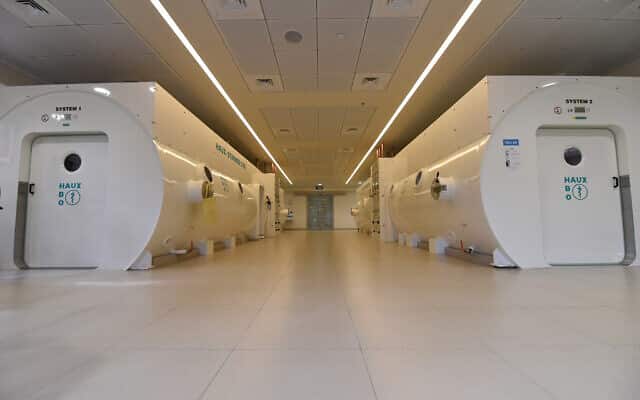Apparently the answer has been right in front of us the whole time, as Professor Shai Efrati claims that when the healthy adults were given special oxygen therapy their cognitive function improved along with their brain tissue function.
“It reverses aging,” said Efrati, a Tel Aviv University associate professor and a senior doctor at the Shamir Medical Center in Tzrifin near Rishon Lezion. “It improves cognitive function, and doesn’t just slow its decline.”
“This is the first time, from what I know, that there is biological intervention that improves the biology of the brain in the normal aging population. The decline that comes with aging doesn’t need to be taken as given,” said Efrati who also co-founded Aviv Scientific and has been working at developing oxygen therapy programs for healthy adults/
The compelling report published in the journal Aging describes the experiment involving 63 adults aged 65+ that were recruited who underwent MRI scans and cognitive ability testing. Some of the participants were given a 60 day course of treatment wherein they spent 2 hour stints in a pressurized chamber 5 times per week breathing pure oxygen for some of that time. At the end of the treatment period those who did not have hyperbaric chamber treatments had similar MRI results to their initial scans while those who had received the oxygen therapy had significant differences which Efrati reports the improvements still held up in testing 6 months later.
“In these people, MRI scans showed that tissue function in the brain, in areas associated with cognitive decline, had improved, and we also found a significant improvement in cognitive function,” he said, stressing that staff carrying out the assessments didn’t know which patients had received the therapy.
Norm O’Rourke, who is professor at Ben Gurion University’s School of Public Health, and an expert on the mental health of seniors said, “It’s very interesting because not only did they do the neurocognitive tests, they also have physiological data on brain blood flow, so the two sets of findings corroborate each other.” Adding that: “The sample size isn’t huge but for a first study that’s not necessarily problematic.”
“This is an interesting study with some preliminary promising outcomes. However, there is still room for caution in interpreting the results. Specifically, the control group did not undergo any intervention while the hyperbaric oxygen therapy (HBOT) group experienced a highly intense protocol of meetings for multiple days a week, across several months,” said Hillel Aviezer, a professor of psychology at the Hebrew University of Jerusalem.
“The HBOT group’s weekly structured meetings, social interactions with the testers, and natural placebo effects may have all contributed to the improved attention and processing speed found in the results. Still, the study provides a nice step forward and will hopefully trigger future work with more tightly controlled double-blind experimental designs,” adds Aviezer.
Pure oxygen therapy is not a new idea, hyperbaric chambers have been around for some time, and can be found around the globe being used to treat a variety of conditions such as thermal burns, air embolisms, and decompression sickness. In America the FDA has cleared the use of this therapy for 13 conditions but urges people to proceed with caution and warns that the use of the chambers can carry risks of joint pain and even paralysis.
Efrati has said that in this study the therapy used a stop start schedule that was developed to treat those in his clinic that are suffering with wounds, burns, as well as other conditions and suggests that this protocol generates significant fluctuations in blood oxygen in which the intermittent increasing of oxygen induces many of the mediators and cellular mechanisms needed for regeneration. Meaning that the fluctuation of oxygen induces a regenerative mechanism that is usually induced during hypoxia, according to Efrati, who adds that this therapy protocol fools the body into a state of hypoxia without it being hazardous.
This protocol study only involved healthy adults because as people age the blood vessels carry less oxygen to the brain, and Efrati believes that the hyperbaric therapy compensates for this. “The occlusion of small blood vessels, similar to the occlusions which may develop in the pipes of an ‘aging’ home, is a dominant element in the human aging process,” he said. “This led us to speculate that hyperbaric oxygen therapy may affect brain performance of the aging population.”




